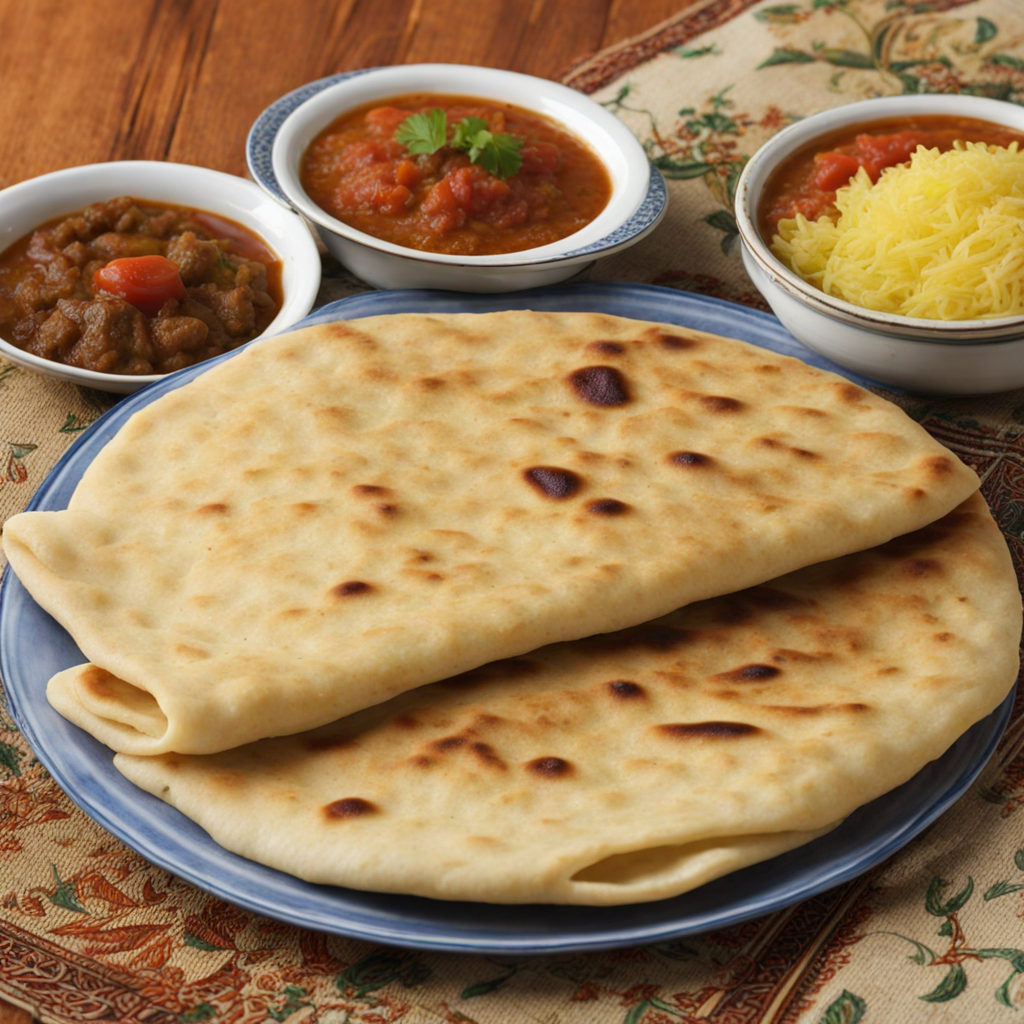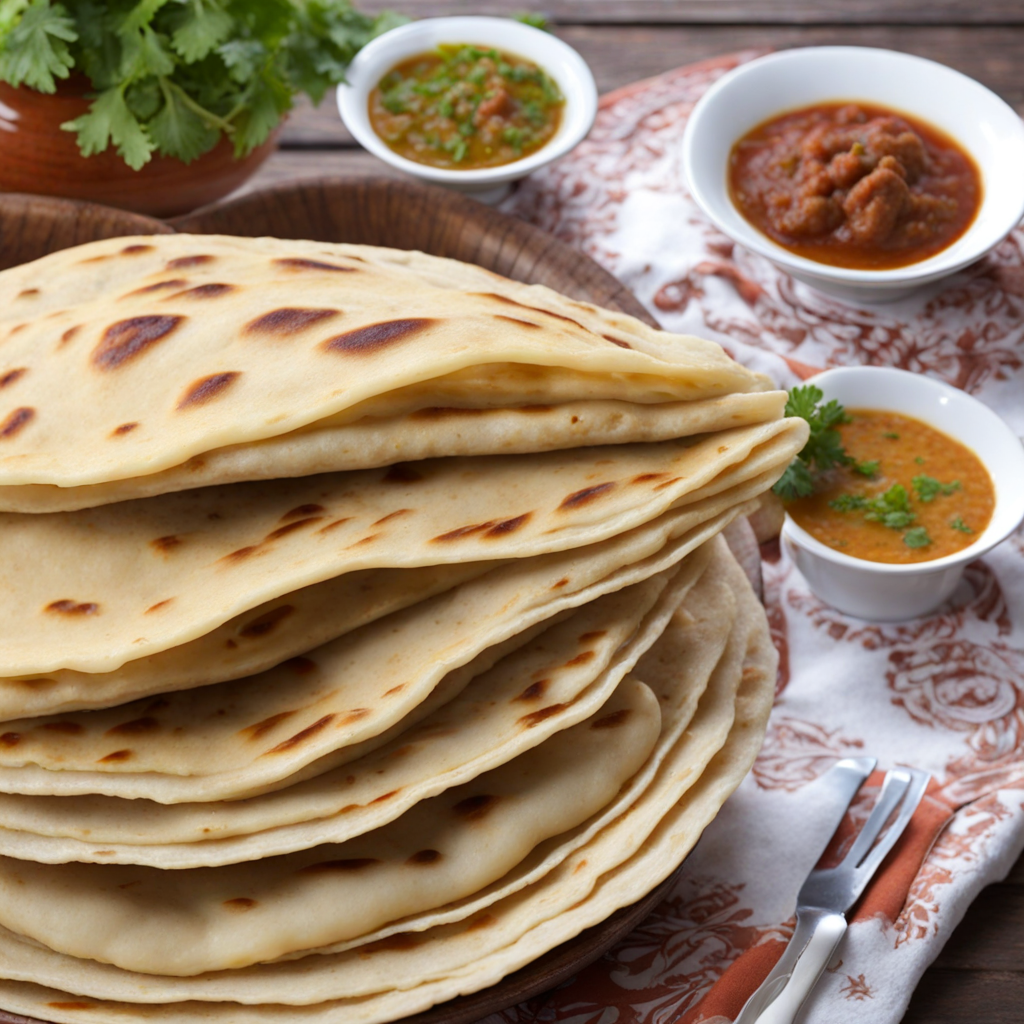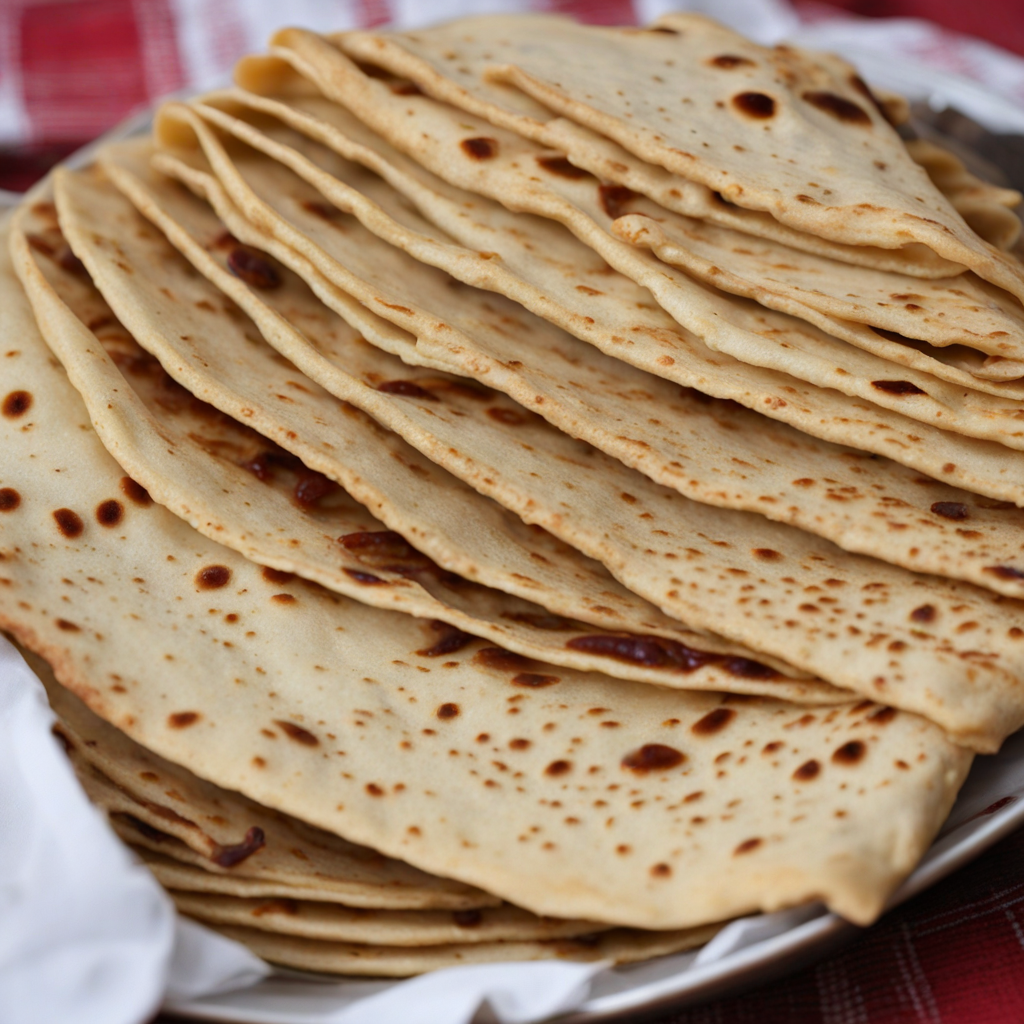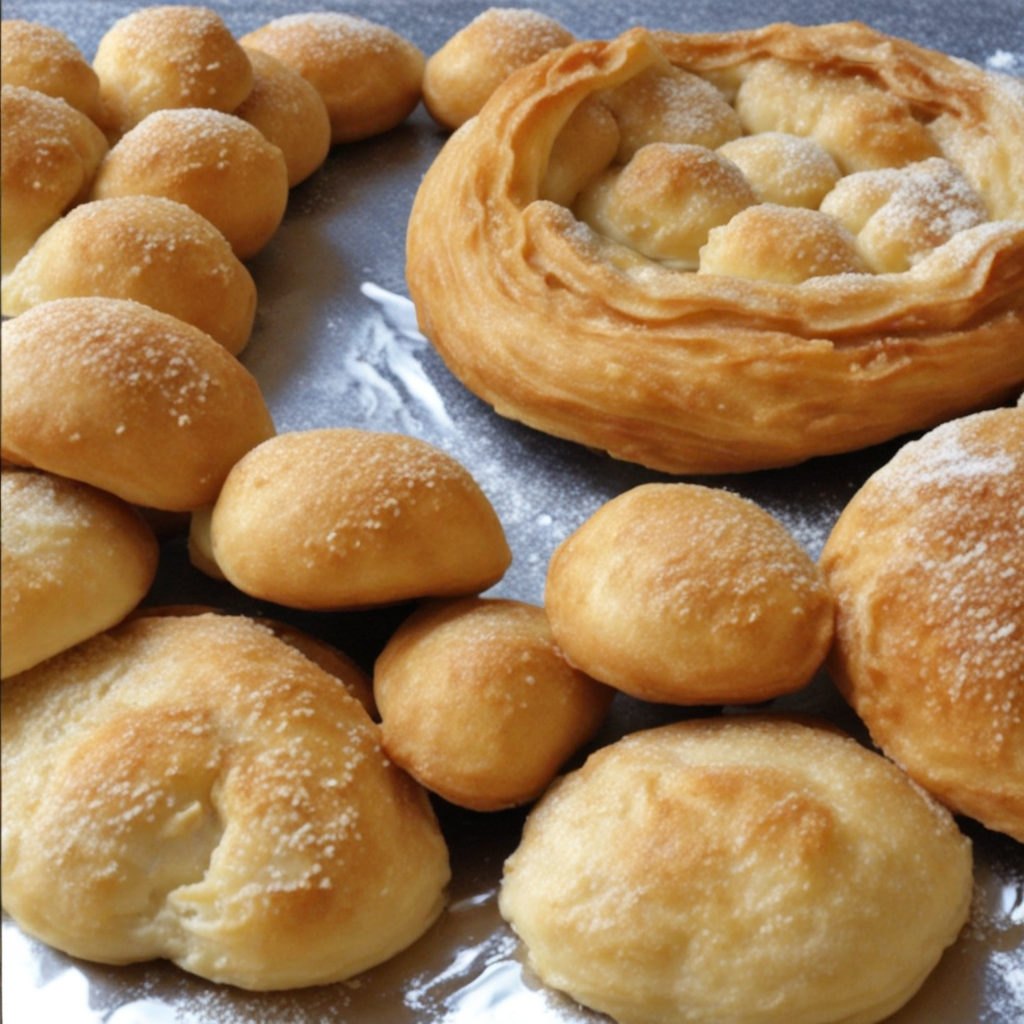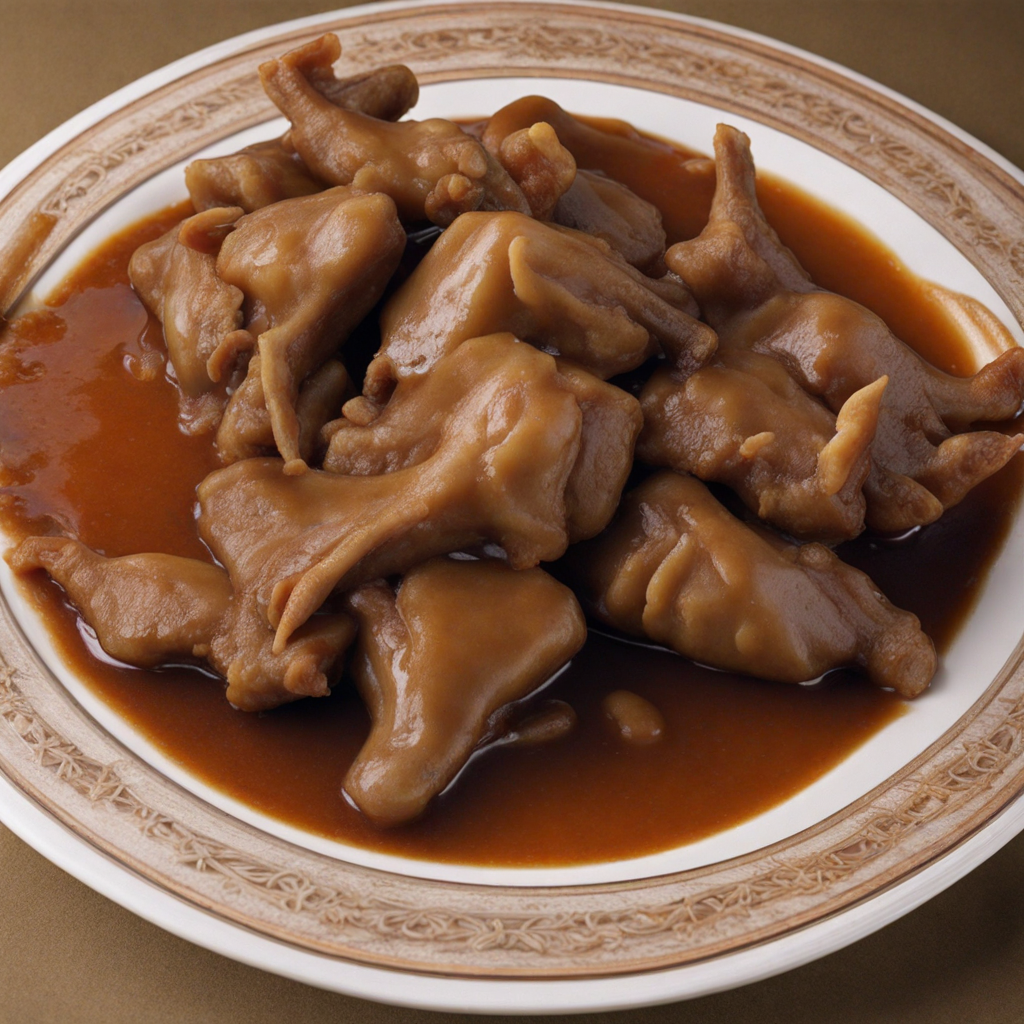Gorasa
Gorasa is a traditional Sudanese dish that embodies the rich culinary heritage of the region. It is primarily made from a fermented dough of sorghum or wheat flour, which is then cooked on a hot surface, creating a unique flatbread that is slightly chewy yet soft. The process of fermentation gives Gorasa its distinctive tangy flavor, setting it apart from other flatbreads around the world. The texture is essential; it should be pliable enough to fold or tear, making it perfect for scooping up stews and vegetables that often accompany it. In Sudanese cuisine, Gorasa serves not just as a staple food but also as a canvas for a variety of flavors. It is commonly paired with savory stews, such as lamb or chicken, cooked with spices like cumin, coriander, and garlic. The combination of the warm, slightly sour Gorasa with the rich, hearty stews creates a delightful contrast that excites the palate. This dish is often enjoyed during family gatherings and celebrations, symbolizing community and togetherness. What makes Gorasa particularly intriguing is its versatility; it can be served with a range of accompaniments, from spicy lentil dishes to fresh salads. The flatbread can also be enjoyed on its own, allowing the eater to savor its unique flavor profile. For those adventurous enough to explore Sudanese cuisine, Gorasa offers an authentic taste experience that captures the essence of Sudan's cultural and culinary diversity, inviting you to delve deeper into the flavors and traditions of this fascinating country.
How It Became This Dish
The History of قراصة (Qarasa) in Sudan #### Origins Qarasa, a traditional Sudanese flatbread, serves as both a staple food and an emblem of cultural identity in Sudan. Its origins can be traced back to the ancient civilizations that flourished along the Nile River, where grains such as sorghum and millet were cultivated. These grains formed the backbone of the Sudanese diet, and the art of bread-making evolved as communities sought to create nourishing and portable food options. Historically, the process of making Qarasa involved grinding grains into flour, mixing it with water to form a dough, and cooking it on a hot surface, typically a clay griddle or a flat stone. This method not only reflects the ingenuity of Sudanese people in utilizing available resources but also highlights the communal aspects of food preparation. In many households, the act of making Qarasa was a communal activity, bringing family members together. #### Cultural Significance Qarasa holds a special place in Sudanese culture. It is not merely a source of sustenance; it is interwoven with social rituals, celebrations, and daily life. Traditionally, Qarasa is served alongside stews, sauces, and various dishes, making it a fundamental component of Sudanese meals. Its texture and flavor complement a wide array of foods, allowing it to adapt to regional variations and personal preferences. In Sudan, food is often a symbol of hospitality, and offering Qarasa to guests signifies warmth and generosity. Whether during festive occasions, religious gatherings, or family meals, Qarasa is frequently present on the table. It embodies the spirit of sharing and community, reinforcing bonds among friends and family members. Moreover, Qarasa has regional variations that reflect the diverse cultures within Sudan. For instance, in the northern regions where wheat is more prevalent, some families may incorporate wheat flour into their Qarasa, while in the southern regions, sorghum remains the preferred grain. These variations not only showcase the adaptability of the bread but also highlight the geographical and cultural diversity within Sudan. #### Development Over Time Over the centuries, Qarasa has undergone various transformations, influenced by shifts in agricultural practices, trade, and globalization. The introduction of new grains, such as wheat and corn, altered the traditional recipes and cooking methods. While traditional Qarasa is made primarily from sorghum or millet, contemporary adaptations have incorporated other flours, leading to variations that cater to modern tastes and dietary preferences. The spread of urbanization in Sudan has also impacted the way Qarasa is prepared and consumed. In urban centers, the traditional methods of bread-making are sometimes replaced by industrial production. Bakeries and food stalls offer ready-made Qarasa, making it more accessible to those who may not have the time or resources to prepare it at home. This convenience has contributed to the bread's popularity, yet it raises questions about the preservation of traditional culinary practices. In recent years, there has been a renewed interest in traditional foods like Qarasa, spurred by a growing movement towards local and sustainable eating. Many Sudanese people are increasingly aware of the importance of preserving their culinary heritage as a means of maintaining cultural identity. This revival has led to a resurgence in home cooking, with families rediscovering traditional recipes and methods of preparation. Additionally, the diaspora of Sudanese people around the world has played a role in the evolution of Qarasa. As Sudanese communities establish themselves in new countries, they adapt their food traditions to incorporate local ingredients while retaining the essence of their culinary heritage. This fusion has led to new interpretations of Qarasa that reflect both Sudanese and global influences. #### Modern-Day Significance Today, Qarasa remains an integral part of Sudanese life. It is often featured in social gatherings, such as weddings and communal feasts, where large quantities are prepared to accommodate the guests. The bread is not only a food item but also a symbol of cultural pride, representing the history and resilience of the Sudanese people. In addition to its cultural importance, Qarasa also plays a role in the economy. Many families engage in small-scale production and sale of Qarasa, contributing to local economies and providing livelihoods. These enterprises often utilize traditional recipes and methods, ensuring that the cultural heritage associated with Qarasa is passed down through generations. Moreover, the global interest in ethnic cuisines has brought attention to Sudanese food, including Qarasa. Chefs and food enthusiasts around the world are exploring Sudanese culinary traditions, leading to a broader appreciation of its flavors and techniques. This interest not only enhances the visibility of Sudanese cuisine on the global stage but also fosters a sense of pride among Sudanese people, both at home and in the diaspora. #### Conclusion In summary, Qarasa is more than just a flatbread; it is a culinary tradition deeply rooted in the history and culture of Sudan. From its ancient origins to its contemporary adaptations, Qarasa embodies the resilience and creativity of the Sudanese people. It serves as a reminder of the importance of community, hospitality, and the continuity of cultural practices in a rapidly changing world. As Qarasa continues to evolve, it remains a vital link to Sudan's past and a source of pride for future generations. Whether enjoyed in a bustling market or a quiet home, Qarasa is a delicious testament to the rich tapestry of Sudanese culinary heritage, inviting all to partake in its history and flavor.
You may like
Discover local flavors from Sudan


